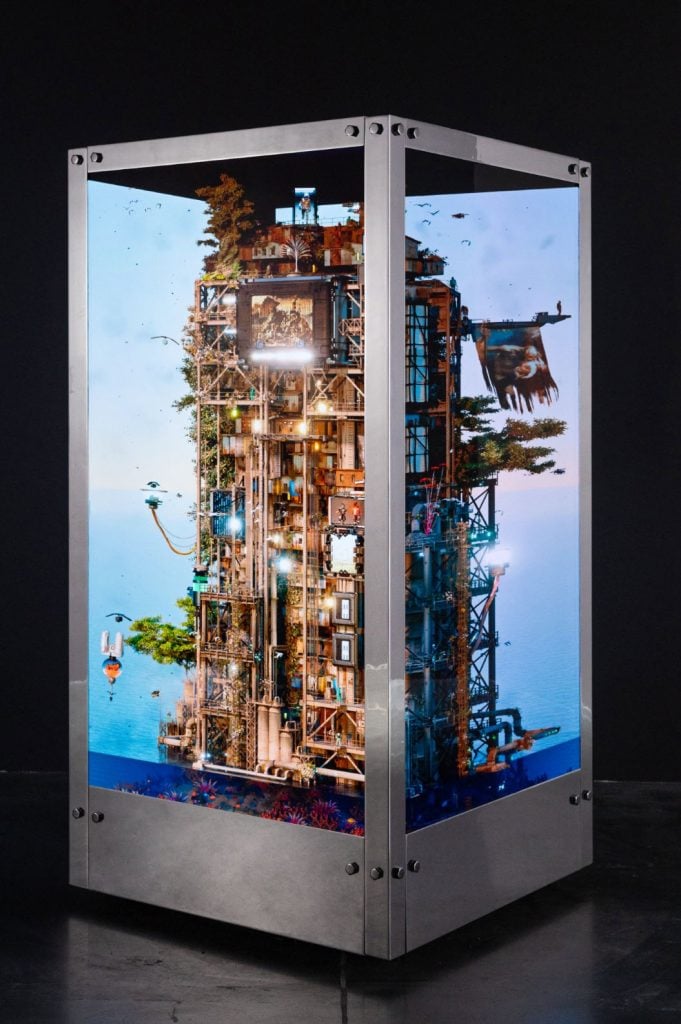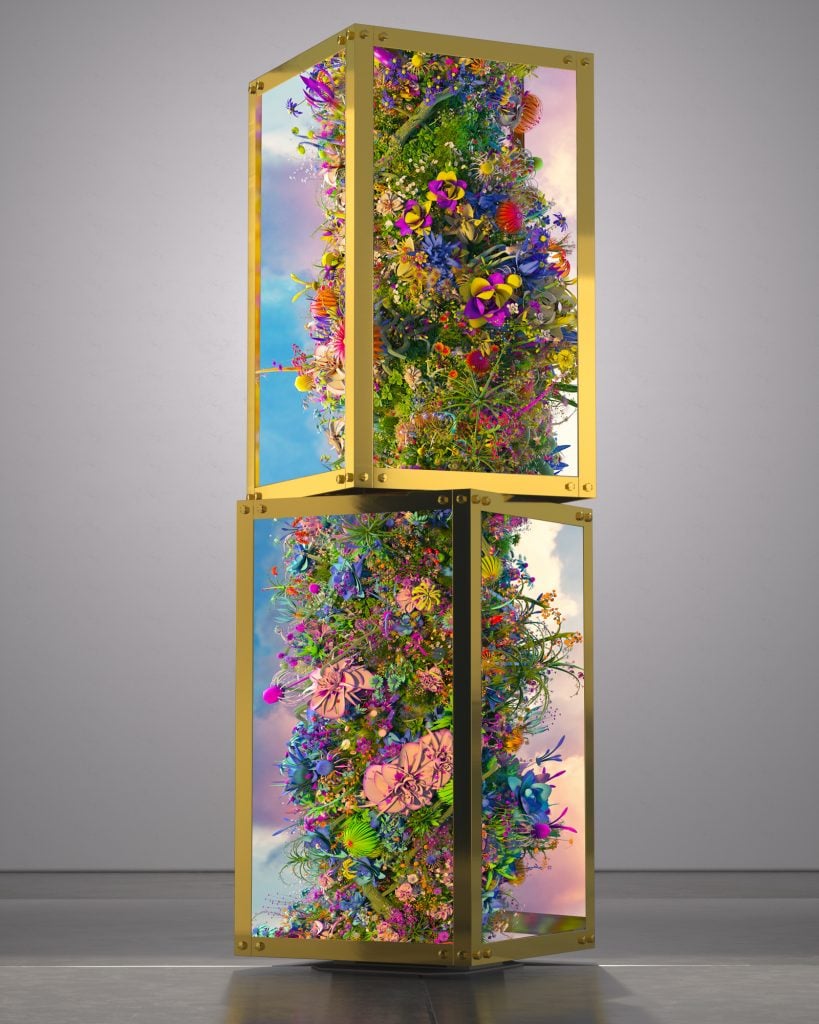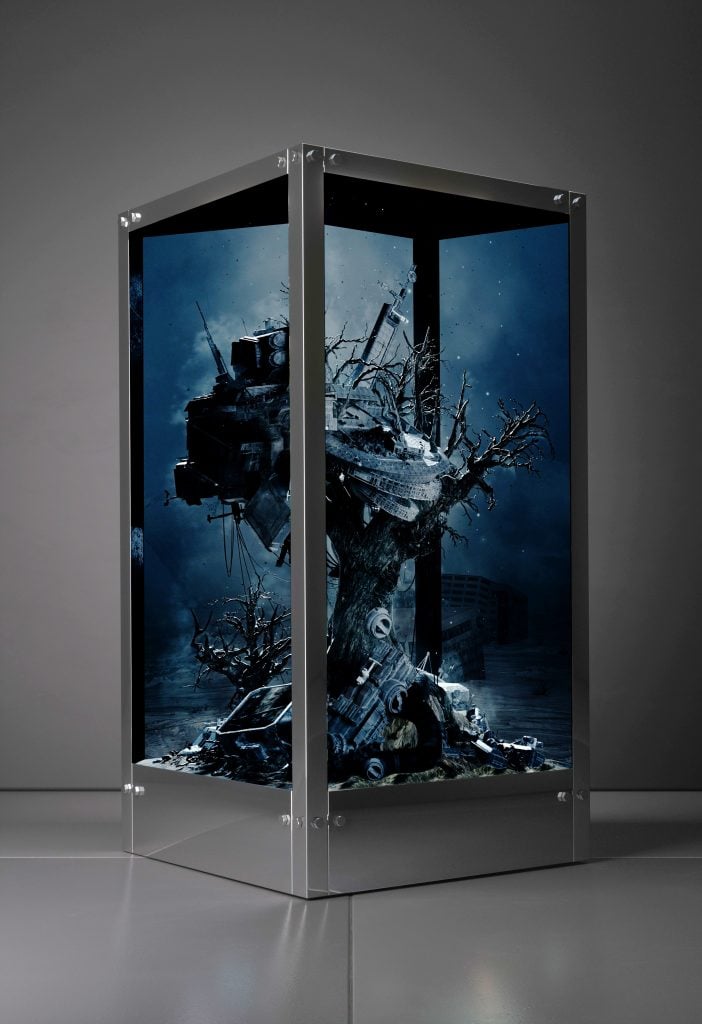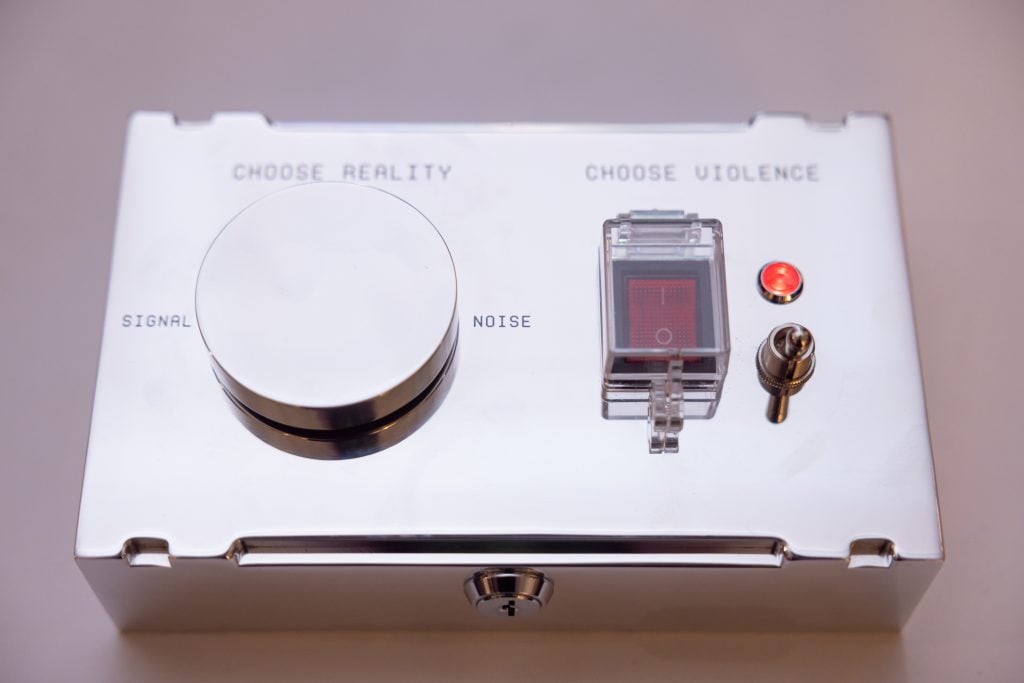
24 Dec Beeple’s New Show Unleashes His Wild Take on the Future
Source Credit: Content and images from Artnet News. Read the original article - https://news.artnet.com/art-world/beeple-sculptures-gibbes-museum-2588753
Mike Winkelmann, aka Beeple, has been thinking about that banana recently. You know, the one that was bought from a fruit seller outside Sotheby’s, duct taped to a wall, flogged for $6.2 million, and devoured before the press in Hong Kong.
The last time the eccentricities of the art world grabbed mainstream attention, Beeple was to thank, his Everydays: the First 5000 Days (2021) prompting that tired and essential question: what is art? This hasn’t happened with Maurizio Cattelan’s Comedian, Winkelmann said. Yes, the work is absurd and grossly expensive, but no one’s saying it’s not art. Nor has it escaped his attention that Justin Sun, the banana’s gleeful owner, was Everydays’s under bidder.
“A hundred years ago, we decided you could turn over a toilet and call it art, but I draw pictures every day on the computer with the sole purpose of them being art and people say it’s not art. How could that possibly be?”
To be clear, this is bafflement, not bitterness, speaking. On the afternoon that we meet via video call to “walk through” his full U.S. debut exhibition at the Gibbes Museum of Art, Winkelmann is expansive and earnest, like a nerdy teacher leading an afterschool robotics program, albeit with spicier vocabulary.
At the Gibbes, he’s on adopted home turf, having moved to Charleston, South Carolina, seven years ago to forever forget Wisconsin winters. The 1905 Beaux Arts building certainly makes for an old-world backdrop, an “extremely compelling juxtaposition,” said Angela Mack, the museum’s president. Two of Winkelmann’s three sculptures are housed inside the rotunda gallery, whose Tiffany-style glass dome and pink and white porcelain tiling seem more accustomed to hosting southern weddings than discussions of social discord and our technological future.
Look past the gawky pop culture characters (Jabba the Hutt, Pepe the Frog, et al.) and the irreverence (phallic humor, gore) and you remember that these are Beeple’s themes. In his vitrine-like cubes, which glow on all sides with screens, Winkelmann seems to have found a medium to carry his concerns into the physical world. Unlike traditional sculpture, however, these are flat and rotate. The reason is simple: Winkelmann dislikes walking, he wants to “sit down and zoom in,” which makes sense for an artist who doesn’t pace and hunch, chisel in hand, but clicks, scans, and squints.

Beeple, S.2122 (2023). Photo: courtesy Mike Winkelmann.
And there’s much to squint at. As with his Everydays, the kinetic sculptures are created using Cinema 4D, a video game and special effects software. You don’t look, you watch. Take S.2122 (2023), which conjures a colony in the ocean a century into the future. It’s a thing of perpetual motion. Drones glide by, workers march across platforms, vegetation sways, the day’s light shifts imperceptibly (spoiler alert: it runs on three one-minute loops).
As with all the sculptures, it’s an editable work-in-progress. Every five years S.2122’s water level will rise, leading the submerged sections and their inhabitants to adapt via new technologies. Is this optimism? No, more a nuanced view of the future based on the present, Winkelmann said. “I don’t think the future is going to necessarily good or bad, but it is going to be very weird.”

Beeple, Exponential Growth (2023). Photo: courtesy Mike Winkelmann.
The work was bought for $9 million at Art Basel Hong Kong in 2023 by the Deji Art Museum, a new institution in Nanjing, China, which boasts Hans Ulrich Obrist as a senior advisor. In November, the museum hosted the world’s first major Beeple show, which opened with Winkelmann executing his 6406th Everyday image live. Deji also commissioned a sculpture that riffed on “Nothing Still About Still Lifes,” a show that brought together three centuries of Chinese and European flower paintings.
The result is Exponential Growth (2023), on loan at the Gibbes, a hyper-dense column of ever-changing flowers. Though they appear drawn from life, Winkelmann played god, inventing some 30 species by selecting for bulb size and petal count. Just as plants bloom and decay, these grow and recede, creating a tableau that never looks the same.

Beeple, Tree of Knowledge (2023). Photo: courtesy Mike Winkelmann.
It’s a state of flux carried on in Tree of Knowledge, the exhibition’s third piece. Here, though, the input isn’t flower dimensions, but our news cycle. Nearby, there’s a control panel featuring a dial and a red button under lock. Turn up the dial and live information (news feeds, stock ticker, crypto price) gradually overwhelms the screens before breaking into fits of glitch. Press the button and it burns to cinders, a violence only Tree’s owner can initiate. Each destruction is registered on the blockchain and after 666 times, it remains forever charred and dystopic.

The control panel from Beeple’s work, Tree of Knowledge. Photo: Gibbes Museum of Art/ MCG Photography.
As a creature of the internet, speed has long been essential to Beeple’s practice. Everydays are spat out in roughly 40 minutes, meaning he stirs debate on the latest spasm of the zeitgeist in real time. Tree recreates something of this experience for the gallery. When Winkelmann turns up the dial during our conversation, Bernie Sanders holds forth, Malibu burns, and Taylor Swift invites Caitlin Clark to a football game. This interactivity is the future of digital art, Winkelmann said, who anticipates humans coming together to watch the machine “do things.”
Tree’s more immediate point is that we can choose how far we want the chaos and stress of media to be our reality. We each have our own dial, Winkelmann noted. Is this a creed the artist lives by? “I could do a better job of putting the phone down,” he said with a smile. “This is an analogy that I need just as much as everybody else.”
“Beeple” is on view at the Gibbes Museum of Art, 135 Meeting St, Charleston, South Carolina, through April 27, 2025.
Source Credit: Content and images from Artnet News. Read the original article - https://news.artnet.com/art-world/beeple-sculptures-gibbes-museum-2588753

